Stress Monitoring of Segment Structure during the Construction of the Small-Diameter Shield Tunnel
Abstract
:1. Introduction
2. Principle of FBG
3. Sensing Performance Test
4. Case Study
4.1. Site Description
4.2. Installation of FBG Sensors
4.3. Measured Data and Analyses
4.3.1. Construction Process of Shield Tunnel
4.3.2. Monitoring Results of Tunnel Segment Strain
4.3.3. Tunnel Segment Stress Analysis
5. Discussion
6. Conclusions
- (1)
- The strain-sensing capabilities of FBG sensors have been verified through a three-point bending test conducted on a concrete beam. A comparison between the theoretical values and the strain data measured by FBG sensors reveals that the relative errors in the actual strain measurements are estimated to be within 6%.
- (2)
- The longitudinal and circumferential relative stresses experienced by the tunnel segments undergo periodic fluctuations during the driving and assembling cycles. Notably, the cycling amplitudes of longitudinal stress are considerably higher than those of the circumferential stress. During the construction process, the small-diameter shield tunnel segments primarily experience longitudinal stress.
- (3)
- The test results reveal that the periodic stress pattern indicates that the grout attains its maximum strength after approximately 24 h. Furthermore, the ratio of variation amplitude between the circumferential stress and longitudinal stress significantly diminishes once the grout has fully cured. It is worth noting that the grouting pressure applied to the tunnel segments has a substantial impact on the circumferential stress, with an influence range spanning six rings in the conducted test.
Author Contributions
Funding
Institutional Review Board Statement
Informed Consent Statement
Data Availability Statement
Acknowledgments
Conflicts of Interest
References
- Cheng, H.Z.; Chen, R.P.; Wu, H.N.; Meng, F.Y. A simplified method for estimating the longitudinal and circumferential behaviors of the shield-driven tunnel adjacent to a braced excavation. Comput. Geotech. 2020, 123, 103595. [Google Scholar] [CrossRef]
- Zhu, H.H.; Wang, D.Y.; Shi, B.; Wang, X.; Wei, G.Q. Performance monitoring of a curved shield tunnel during adjacent excavations using a fiber optic nervous sensing system. Tunn. Undergr. Space Technol. 2022, 124, 104483. [Google Scholar] [CrossRef]
- Zhang, Y.; Karlovšek, J.; Liu, X. Identification method for internal forces of segmental tunnel linings via the combination of laser scanning and hybrid structural analysis. Sensors 2022, 22, 2421. [Google Scholar] [CrossRef] [PubMed]
- Arnau, O.; Molins, C.; Blom, C.B.M.; Walraven, J.C. Longitudinal time-dependent response of segmental tunnel linings. Tunn. Undergr. Space Technol. 2012, 28, 98–108. [Google Scholar] [CrossRef]
- Schubert, W.; Moritz, B. The state of the art in monitoring and geotechnical safety management for shallow and deep tunnels. Geomech. Tunn. 2015, 8, 409–413. [Google Scholar] [CrossRef]
- Feng, X.T.; Yao, Z.B.; Li, S.J.; Wu, S.Y.; Yang, C.X.; Guo, H.S. In situ observation of hard surrounding rock displacement at 2400-m deep tunnels. Rock Mech. Rock Eng. 2018, 51, 873–892. [Google Scholar] [CrossRef]
- Ariznavarreta-Fern’andez, F.; Gonz´alez-Palacio, C.; Menéndez-Díaz, A.; Ordõnez, C. Measurement system with angular encoders for continuous monitoring of tunnel convergence. Tunn. Undergr. Space Technol. 2016, 56, 176–185. [Google Scholar] [CrossRef]
- Attard, L.; Debono, C.J.; Valentino, G.; Castro, M.D. Tunnel inspection using photogrammetric techniques and image processing: A review. Photogramm. Remote Sens. 2018, 144, 180–188. [Google Scholar] [CrossRef]
- Jiang, Q.; Zhong, S.; Pan, P.; Shi, Y.; Guo, H.; Kou, Y. Observe the temporal evolution of deep tunnel’s 3D deformation by 3D laser scanning in the Jinchuan No.2 Mine. Tunn. Undergr. Space Technol. 2020, 97, 103237. [Google Scholar] [CrossRef]
- Zhu, A.X. A novel high-precision photogrammetric technique for monitoring subway tunnel deformation. Structures 2023, 55, 2217–2231. [Google Scholar] [CrossRef]
- Cao, Z.; Chen, D.; Shi, Y.; Zhang, Z.; Jin, F.; Yun, T.; Xu, S.; Kang, Z.; Zhang, L. A Flexible architecture for extracting metro tunnel cross sections from terrestrial laser scanning point clouds. Remote Sens. 2019, 11, 297. [Google Scholar] [CrossRef]
- Monsberger, C.M.; Lienhart, W.; Moritz, B. In-situ assessment of strain behavior inside tunnel linings using distributed fibre optic sensors. Geomech. Tunn. 2018, 11, 701–709. [Google Scholar] [CrossRef]
- Li, C.; Zhao, Y.; Liu, H.; Zhang, Z.; Wan, Z.; Chen, Y.; Xu, X.; Xu, J. Combined interrogation using an encapsulated FBG sensor and a distributed Brillouin tight buffered fiber sensor in a tunnel. Struct. Health Monit. 2010, 9, 341–346. [Google Scholar]
- Mohamad, H.; Soga, K.; Bennett, P.J.; Mair, R.J.; Lim, C.S. Monitoring twin tunnel interaction using distributed optical fiber strain measurements. J. Geotech. Geoenviron. Eng. 2012, 138, 957–967. [Google Scholar] [CrossRef]
- Gue, C.Y.; Wilcock, M.; Alhaddad, M.M.; Elshafie, M.; Soga, K.; Mair, R.J. The monitoring of an existing cast iron tunnel with distributed fibre optic sensing (DFOS). J. Civ. Struct. Health Monit. 2015, 5, 573–586. [Google Scholar] [CrossRef]
- Gómez, J.; Casas, J.R.; Villalba, S. Structural Health Monitoring with Distributed Optical Fiber Sensors of tunnel lining affected by nearby construction activity. Autom. Constr. 2020, 117, 103261. [Google Scholar] [CrossRef]
- Wang, X.; Shi, B.; Wei, G.Q.; Chen, S.E.; Zhu, H.H.; Wang, T. Monitoring the behavior of segment joints in a shield tunnel using distributed fiber optic sensors. Struct. Control Health Monit. 2018, 25, e2056. [Google Scholar] [CrossRef]
- Li, C.; Tang, J.; Cheng, C.; Cai, L.; Yang, M. FBG arrays for quasi-distributed sensing: A review. Photonic Sens. 2021, 11, 91–108. [Google Scholar] [CrossRef]
- Majumder, M.; Gangopadhyay, T.K.; Chakraborty, A.K.; Dasgupta, K.; Bhattacharya, D.K. Fibre Bragg gratings in structural health monitoring—Present status and applications. Sens. Actuators A Phys. 2008, 147, 150–164. [Google Scholar] [CrossRef]
- Zheng, X.; Shi, B.; Zhang, C.C.; Sun, Y.J.; Zhang, L.; Han, H.M. Strain transfer mechanism in surface-bonded distributed fiber-optic sensors subjected to linear strain gradients: Theoretical modeling and experimental validation. Measurement 2021, 179, 109510. [Google Scholar] [CrossRef]
- Ansari, F.; Libo, Y. Mechanics of bond and interface shear transfer in optical fiber sensors. J. Eng. Mech. 1998, 124, 385–394. [Google Scholar] [CrossRef]
- Wang, H.; Jiang, L.; Xiang, P. Improving the durability of the optical fiber sensor based on strain transfer analysis. Opt. Fiber Technol. 2018, 42, 97–104. [Google Scholar] [CrossRef]
- Wang, H.; Xiang, P.; Jiang, L. Strain transfer theory of industrialized optical fiber-based sensors in civil engineering: A review on measurement accuracy, design and calibration. Sens. Actuators A-Phys. 2019, 285, 414–426. [Google Scholar] [CrossRef]
- Ding, Y.; Wang, P.; Yu, S. A new method for deformation monitoring on H-pile in SMW based on BOTDA. Measurement 2015, 70, 156–168. [Google Scholar] [CrossRef]
- Mohamad, H.; Soga, K.; Pellew, A.; Bennett, P.J. Performance monitoring of a secant-piled wall using distributed fiber optic strain sensing. J. Geotech. Geoenviron. Eng. 2011, 137, 1236–1243. [Google Scholar] [CrossRef]
- Mo, H.H.; Chen, J.S. Study on inner force and dislocation of segments caused by shield machine attitude. Tunn. Undergr. Space Technol. 2008, 23, 281–291. [Google Scholar] [CrossRef]
- Shi, C.; Wang, Z.; Gong, C.; Liu, J.; Peng, Z.; Cao, C. Prediction of the additional structural response of segmental tunnel linings induced by asymmetric jack thrusts. Tunn. Undergr. Space Technol. 2022, 124, 104471. [Google Scholar] [CrossRef]

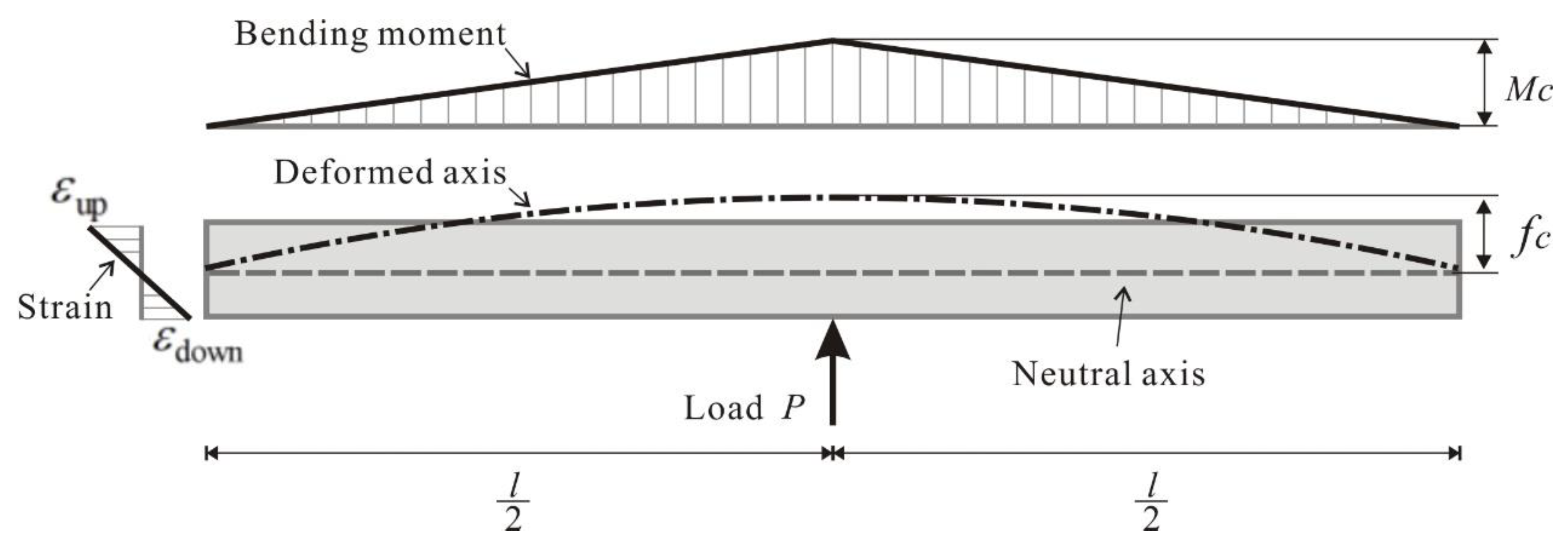
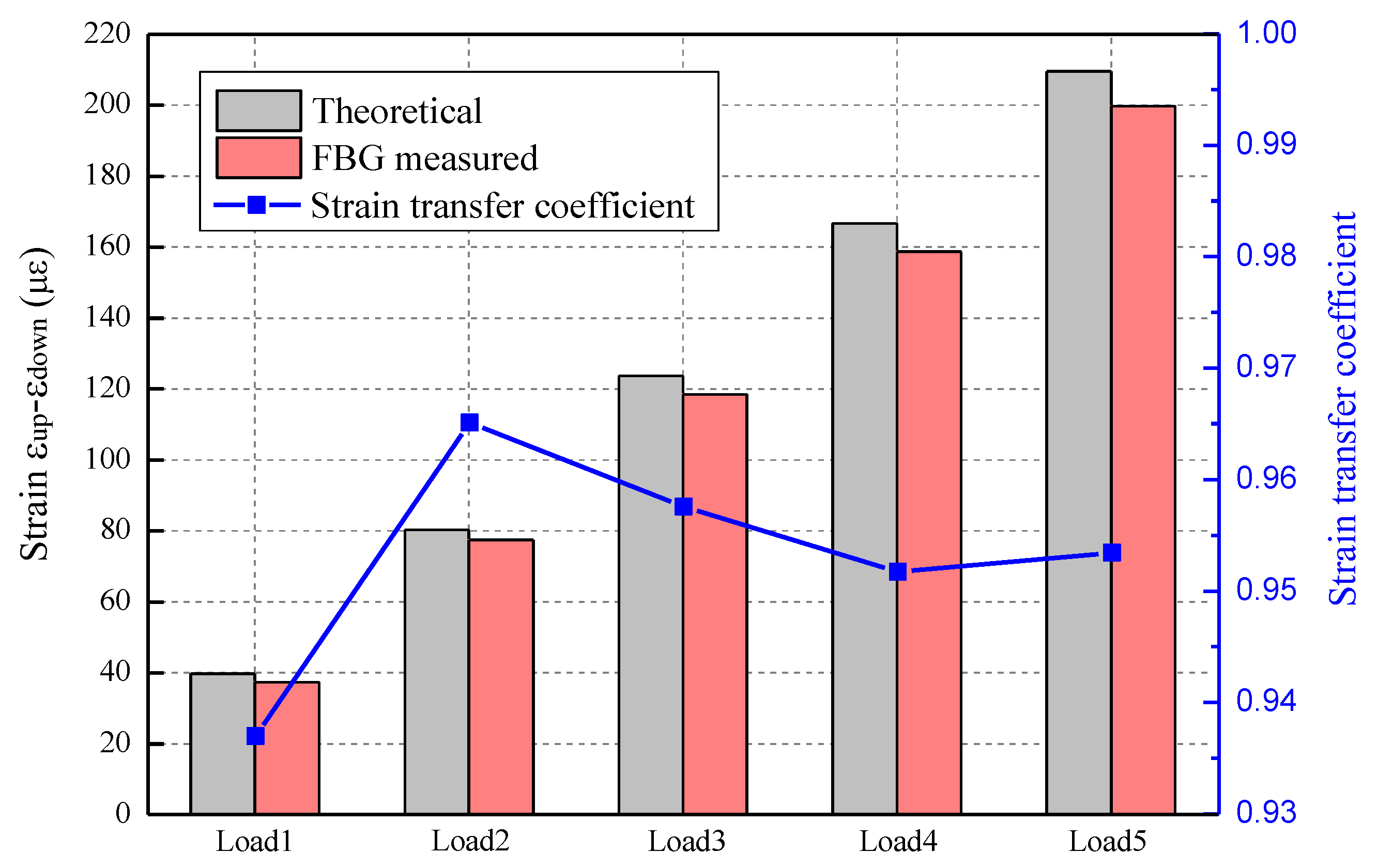






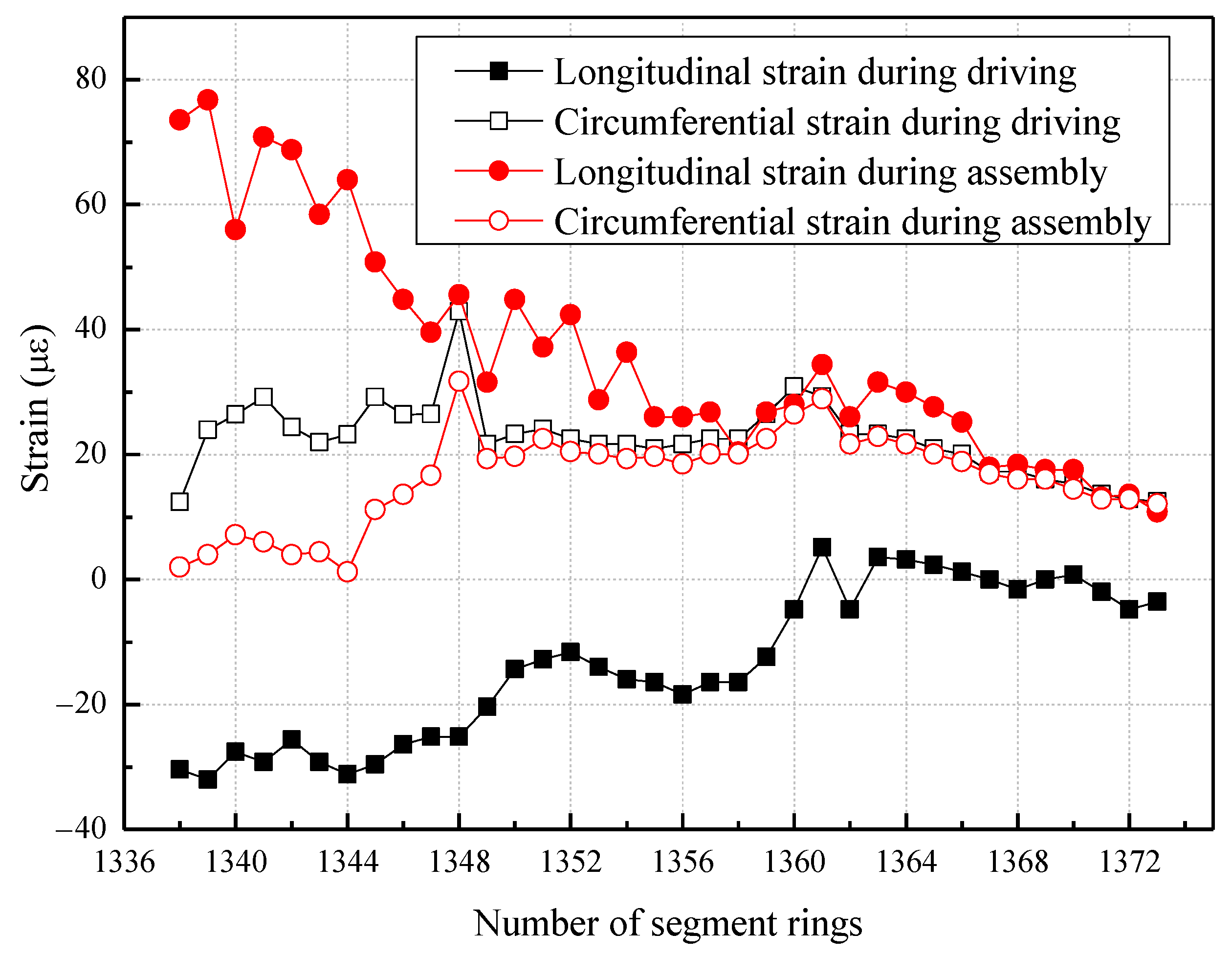

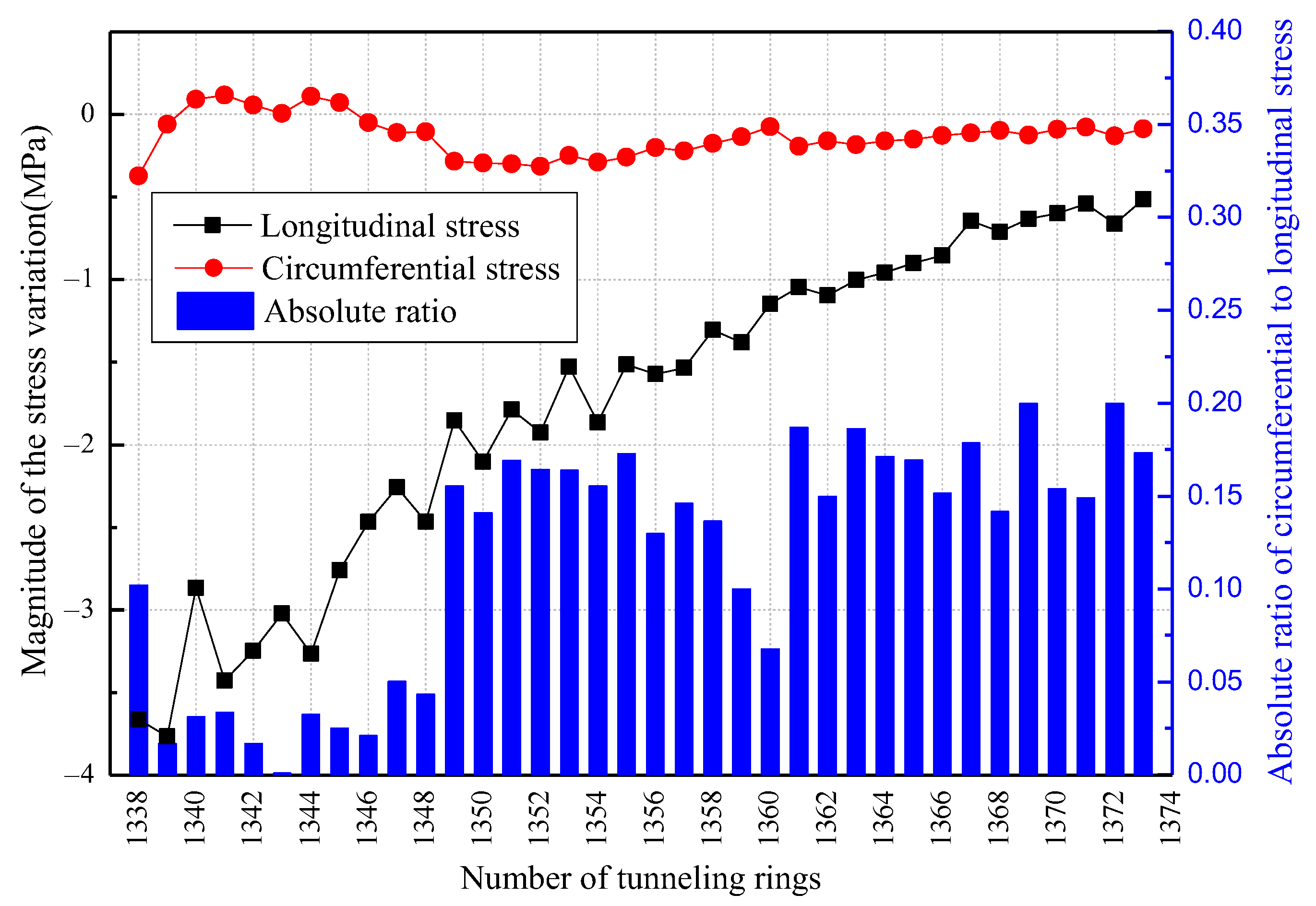
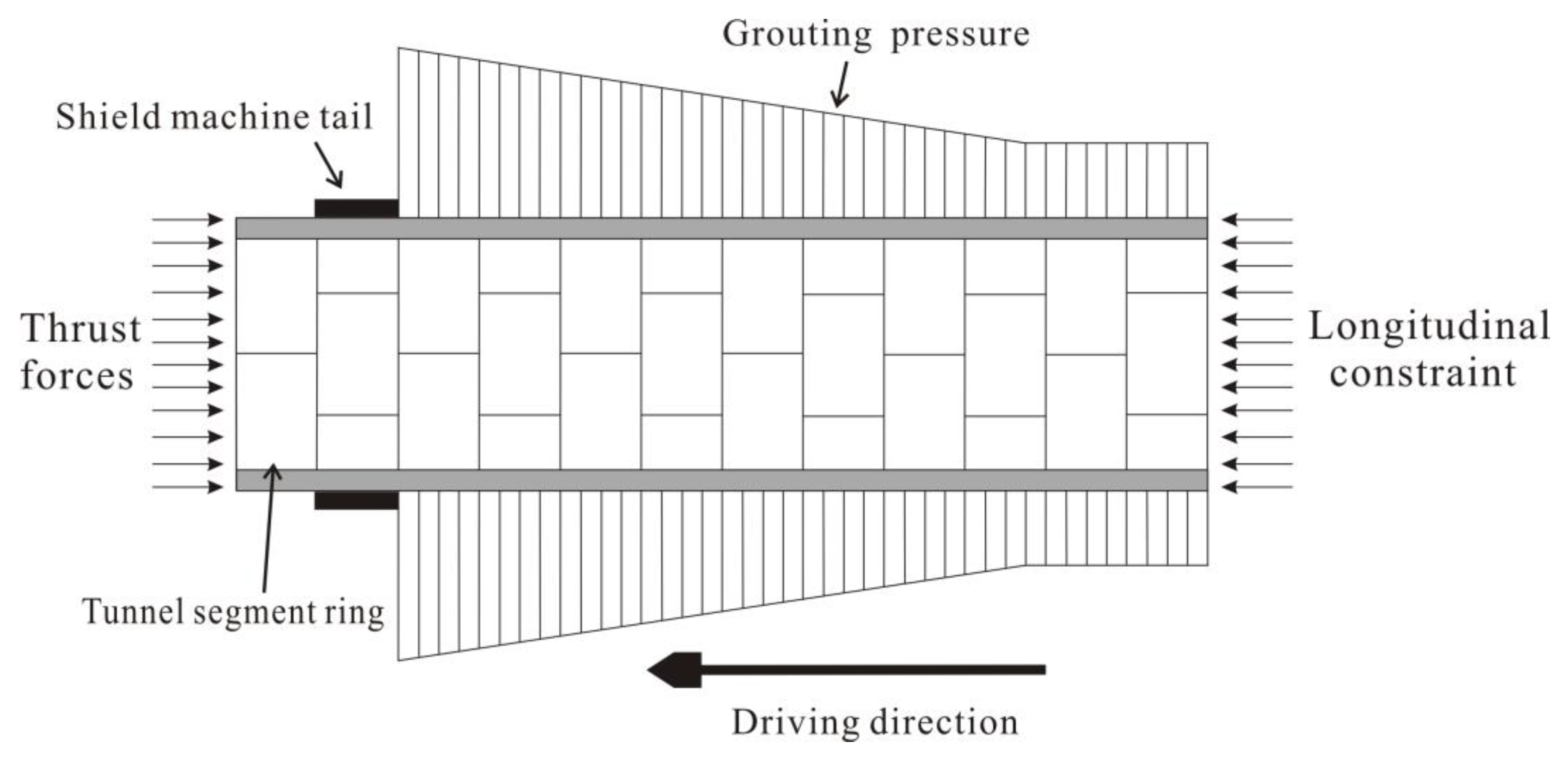
Disclaimer/Publisher’s Note: The statements, opinions and data contained in all publications are solely those of the individual author(s) and contributor(s) and not of MDPI and/or the editor(s). MDPI and/or the editor(s) disclaim responsibility for any injury to people or property resulting from any ideas, methods, instructions or products referred to in the content. |
© 2023 by the authors. Licensee MDPI, Basel, Switzerland. This article is an open access article distributed under the terms and conditions of the Creative Commons Attribution (CC BY) license (https://creativecommons.org/licenses/by/4.0/).
Share and Cite
Ding, L.; Sun, Y.-J.; Zhang, W.-Z.; Bi, G.; Xu, H.-Z. Stress Monitoring of Segment Structure during the Construction of the Small-Diameter Shield Tunnel. Sensors 2023, 23, 8023. https://doi.org/10.3390/s23198023
Ding L, Sun Y-J, Zhang W-Z, Bi G, Xu H-Z. Stress Monitoring of Segment Structure during the Construction of the Small-Diameter Shield Tunnel. Sensors. 2023; 23(19):8023. https://doi.org/10.3390/s23198023
Chicago/Turabian StyleDing, Liang, Yi-Jie Sun, Wen-Zhi Zhang, Gang Bi, and Hong-Zhong Xu. 2023. "Stress Monitoring of Segment Structure during the Construction of the Small-Diameter Shield Tunnel" Sensors 23, no. 19: 8023. https://doi.org/10.3390/s23198023
APA StyleDing, L., Sun, Y.-J., Zhang, W.-Z., Bi, G., & Xu, H.-Z. (2023). Stress Monitoring of Segment Structure during the Construction of the Small-Diameter Shield Tunnel. Sensors, 23(19), 8023. https://doi.org/10.3390/s23198023





